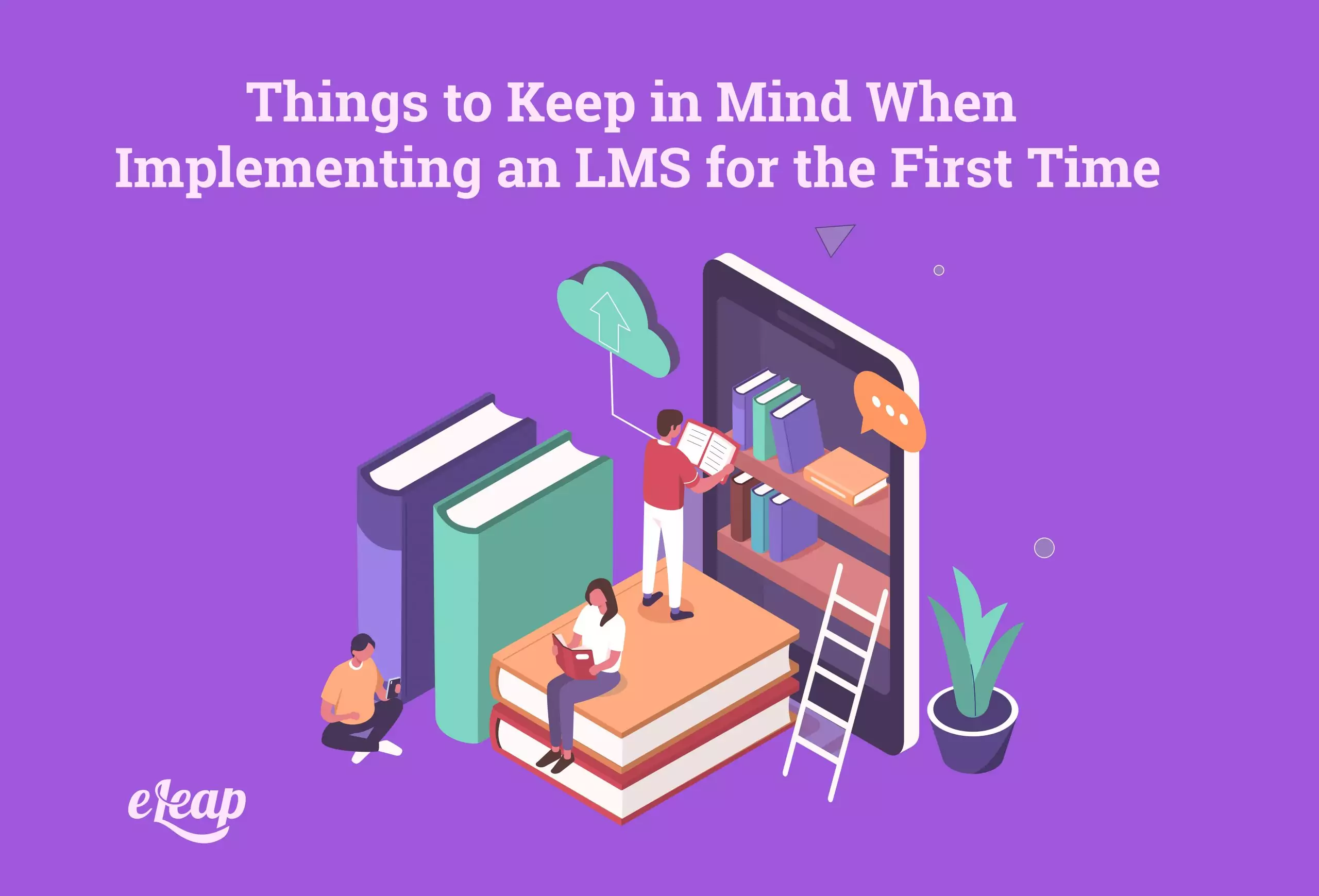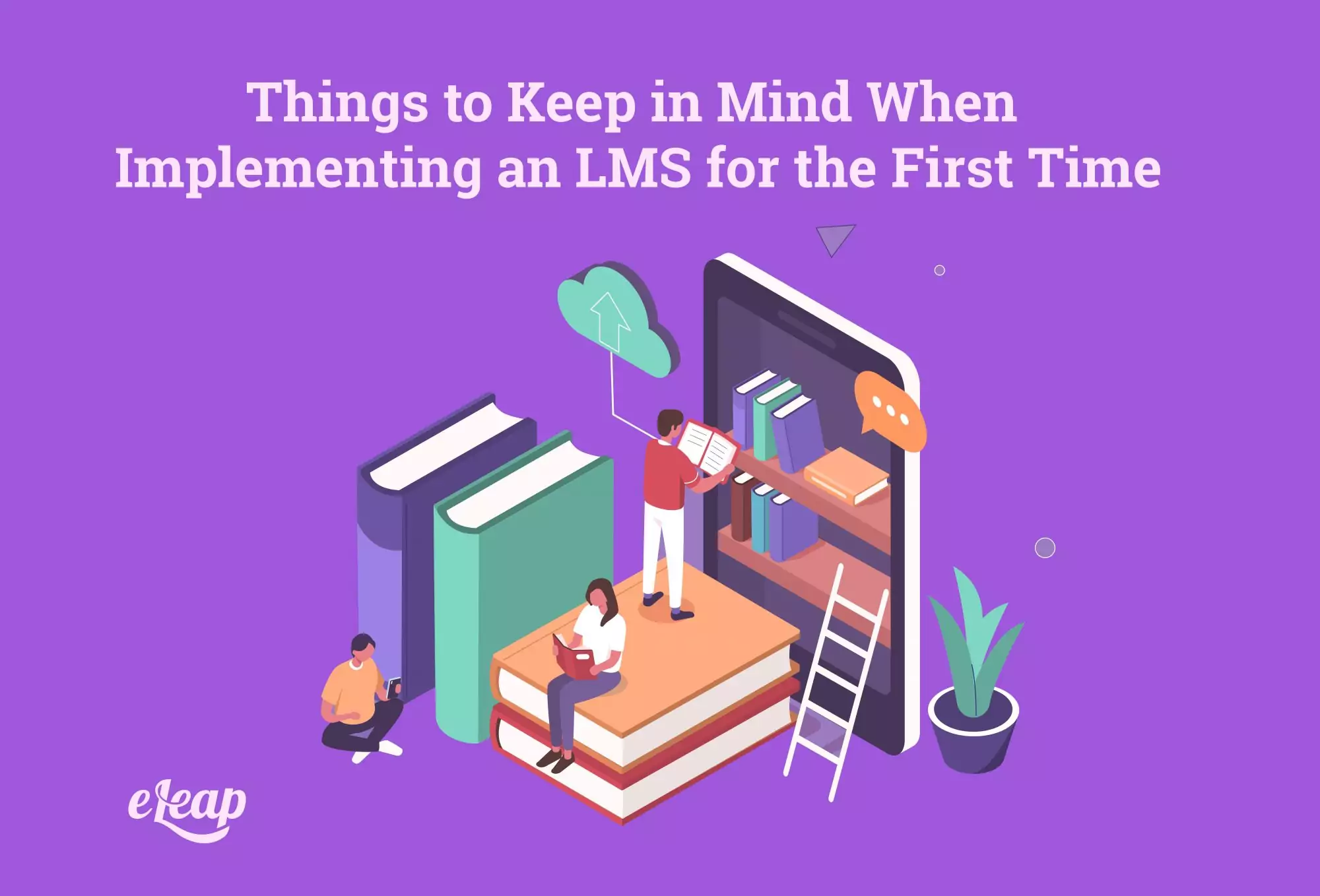Things to Keep in Mind When Implementing an LMS for the First Time

Learning management systems are a key component of most organization’s learning and training strategy. In fact, in many instances, they’ve taken over entirely from conventional training methods. But while learning management systems are rapidly becoming accepted and are known to be the way forward, implementing an LMS for the first time can be a bit tricky.
If you’ve never used an LMS within your organization before, it might feel a bit foreign. It’s a learning curve, and it will likely feel strange to your employees, too. But implementing it into your training in the right way is critical. If you don’t, you may have bad experiences, and your employees may be put off from using the LMS, which will negate it’s many potential positive benefits.

What Benefits Can You Expect From an LMS?
If you’re just getting started with an LMS, you need to know what to expect. eLearning has numerous benefits for organizations and employees, including:
- Reduced costs – Learning management systems are an investment to get set up, but in the long run, they’re save your company money. The more users you have, the more of an ROI you will see. And you won’t need to continuously pay for costs associated with conventional training, such as paying for travel and renting space for classes.
- Better productivity – one of the best benefits of an LMS is that they’re shown to improve engagement and productivity amongst your employees. They’re just generally more engaging than other forms of learning. But they also enable you to train employees regardless of location or time zone, which is critical for remote workers.
- Better retention – With an LMS, training is vastly more engaging, which is great if you want to improve how much information your employees actually retain. Furthermore, employees can easily take quizzes to determine where they need to repeat parts of the training, and then easily go over those parts again at any time.
- Standardized processes – With eLearning, you can ensure training standardization across your entire organization. You can make sure all employees, including remote employees, have fair and equal access to the same training materials.
- Better Management and Resources – A good LMS doesn’t just train employees, it also allows organizations to monitor training, record and use data, bolster collaboration amongst employees, and much more. eLearning provides access to far more tools than conventional training can. It also provides those tools in real-time, from any place in the world.
What to Remember When First Implementing an LMS
So, you’re aware of all the positive benefits that an LMS can bring once it’s up and running, but exactly how do you get it up and running to begin with? Here, we will go over some top tips to ensure that your first time implementing an LMS goes smoothly and properly to avoid negative consequences from improper introduction.
First, Set Clear and Defined Objectives
Your employees need to understand exactly what you are expecting out of your new learning management system. They also need to see you excited about its introduction. Many employees will be put off of change or the implementation of such a critical, different new tool. This is particularly true of employees who have never been exposed to any form of eLearning before. If you don’t set clear, defined objectives, and introduce the system in a positive manner, you won’t start out on the right foot.
Introduce the New LMS Slowly
Don’t have all your employees come in on a Monday morning only to be told you have a new eLearning system and they need to start working their way through training materials. Introduce your LMS slowly and steadily into your training and learning regime. It’s a good idea to have all employees, even the seasoned ones, work through training materials so they get an idea of how the LMS works and what to expect. But don’t suddenly drop it on them and demand that they complete the courses. Introduce the learning management system to them slowly so they have time to adapt and accept it and see it’s many benefits for themselves! This will make it more digestible for them and is particularly important for employees who may naturally be more tech illiterate.
Keep Courses Short and Digestible
Avoid launching your LMS with a whole lot of long, difficult to grasp content. It will only be overwhelming and make it hard for employees to properly absorb. This is important when it’s their first exposure to the system, as it will only put them off in the long run if they find the content too lengthy and tricky. You need to ensure their first experience with the new learning management system is a positive one.
Give Out Rewards
Rewarding your employees for using the eLearning system successful is a great way to keep them motivated and associating positive experiences with the LMS. Remember, you can create different types of rewards that aren’t monetary or tangible. In many cases, recognition goes a long way.
Use Your Data
Once you have the LMS up and running, you can start accessing the data. Use that data to develop the content of your eLearning and tailor it even more specifically to your employees and organization. You can also use data to determine which employees might need a little extra assistance adapting to the new learning management system. Remember that implementing an lms for the first time means you will need to iterate as you get more feedback and learn more from your data.
Overall, choosing to implement an LMS into your organization’s training regime is an excellent decision. You’ve done more of the hard work in shopping around, choosing the right LMS, and getting it set up. Don’t throw all that work away by introducing it wrong to your team. Implementing the LMS into your organization the right way ensures employees don’t feel overwhelmed and can learn to use the LMS properly, reap it’s benefits, and become more productive and engaged, which is ultimately what you want from your new eLearning tool.